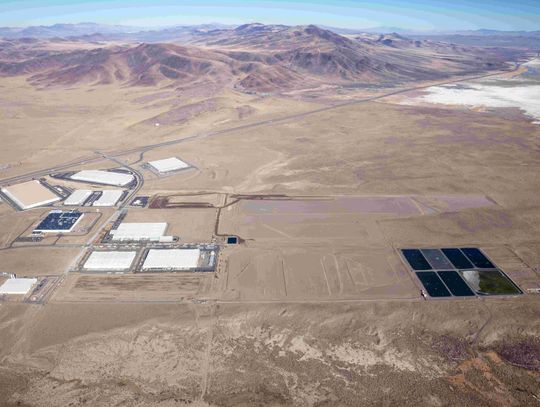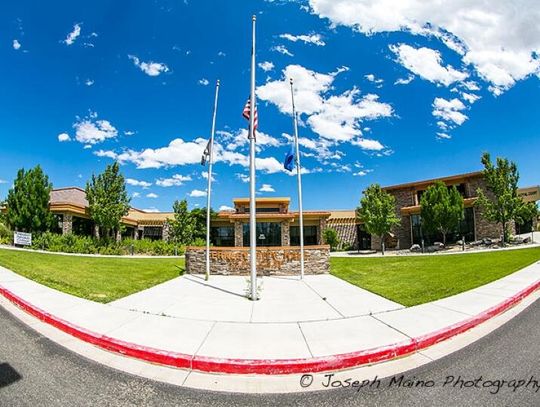When a major industrial project breaks ground, the most visible impact is often the building itself—a massive warehouse, distribution center, or manufacturing facility. But the real power of industrial growth lies in what happens next: the ripple effect it has across the local economy, particularly for small businesses.
In Fernley, this dynamic is unfolding in real time. As developments like Victory Logistics District take shape, the effects are being felt not just in job creation and tax revenue, but in coffee shops, auto repair garages, real estate offices, childcare centers, and other locally owned businesses that form the backbone of the community.
The economic ripple effect describes how a single investment can spark a chain reaction of additional spending and activity throughout a local economy. When a new industrial tenant moves into a facility like the Victory Logistics District, they don’t operate in a vacuum. Their presence drives direct and indirect benefits that reach far beyond the walls of the warehouse.
Take, for example, a logistics company that signs a lease at Victory. That company might hire 150 employees, many of whom live in Fernley or nearby communities. Those employees spend their paychecks locally—eating at restaurants, buying gas, getting haircuts, and shopping for groceries. At the same time, the logistics company contracts with vendors for services like landscaping, equipment maintenance, and office cleaning. These vendors are often local small businesses.
In turn, those small businesses see increased demand, which may lead them to hire more workers or invest in expansion. This is the multiplier effect in action—where one lease agreement becomes the catalyst for a series of economic gains, resulting in sustained, community-wide growth.
While industrial development brings broad economic benefits, certain sectors of Fernley’s small business community are especially well-positioned to grow alongside this expansion.
Local restaurants and cafés, for instance, often see a measurable uptick in business as more workers clock in nearby—whether it's morning coffee runs, lunch breaks, or after-work dinners. Construction and trade services also benefit, since industrial tenants depend on electricians, HVAC technicians, and other specialized trades to keep operations running smoothly.
As new jobs attract families to the area, demand increases for housing, apartment rentals, and property management—fueling growth in the real estate sector. This population growth also drives the need for more healthcare and childcare providers, from family clinics and dentists to daycares and after-school programs.
Retailers and service providers—barbers, gyms, dry cleaners, auto shops—experience a rise in foot traffic and spending power as the community expands.
Fernley’s strategic location along major transportation routes, combined with favorable tax policies, abundant land, and a skilled workforce, makes it an ideal environment for logistics, advanced manufacturing, and data-driven industries. Victory Logistics District is helping to unlock that potential, offering modern facilities, direct rail and road access, and shovel-ready parcels designed to meet the needs of today’s industrial tenants.
But the benefits of industrial growth reach far beyond the industrial tenants. According to regional economic models, for every 100 jobs created in logistics or manufacturing, an additional 60 to 80 jobs are generated in the local service economy. That’s how growth becomes self-reinforcing, each new wave of economic activity setting off another.
To fully capitalize on this momentum, Fernley’s small business community has an opportunity to position itself strategically. Local entrepreneurs can build partnerships with industrial employers to offer goods and services tailored to their workforce. Expanding hours, hiring new staff, or investing in training programs can help businesses scale to meet rising demand.
Collaborating with the city and local chambers of commerce can also boost visibility and streamline efforts across sectors. As new workers arrive, many with different schedules and needs, businesses that adapt to serve shift workers or newly relocated families will be better positioned to thrive.
At the same time, public-private coordination will be essential. Strategic investments in housing, infrastructure, and education will ensure that Fernley can grow not just rapidly, but sustainably and equitably, preserving its character while building a resilient future.
At Mark IV Capital, we understand that lasting impact goes beyond square footage. That’s why our approach to development includes collaboration with workforce organizations, chambers of commerce, local utilities, and city leaders. We believe that when industrial development is done right, it becomes a catalyst—not just for job growth, but for community vibrancy.
As Victory Logistics District grows, so too will the small businesses that make Fernley special. This is how we create not just buildings—but opportunity.
![]()
This article is part of a weekly sponsored series by Mark IV Capital, developer of Victory Logistics District. For more information on upcoming projects and community partnerships, visit markiv.com.









Comment
Comments